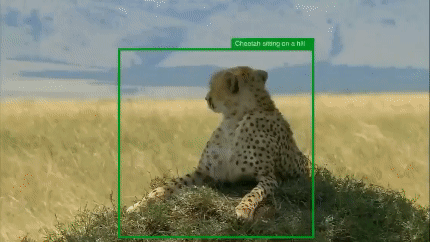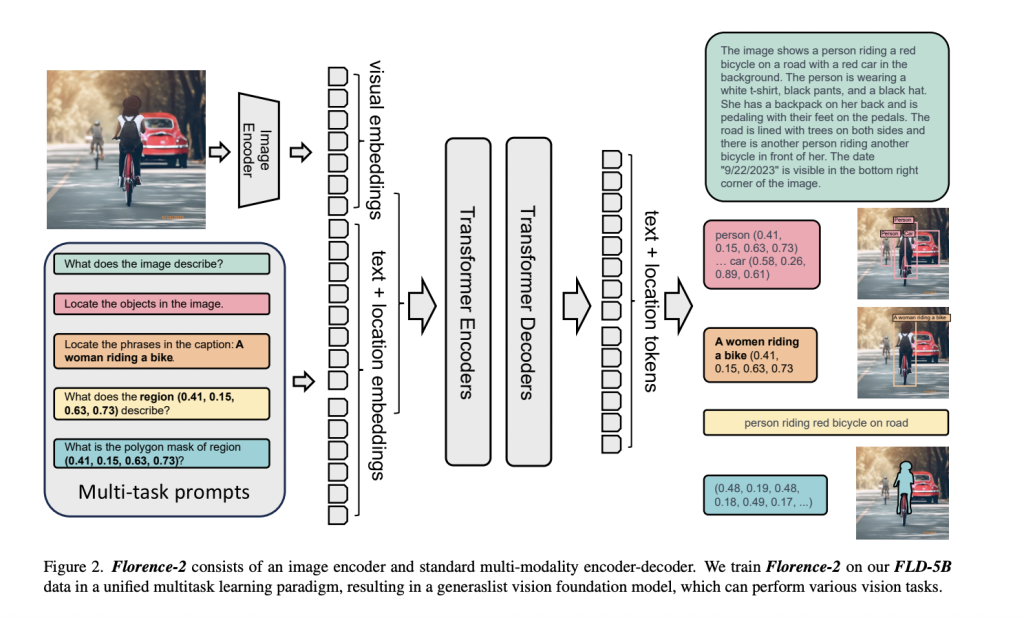In recent years, innovations in artificial intelligence (AI) have continued to astound even the most tech-savvy individuals. Amongst these advancements, Microsoft has recently garnered attention with the introduction of Florence-2. This cutting-edge technology symbolizes a giant stride within the field of computer vision, showcasing a startling proficiency in understanding and carrying out various vision-language tasks and computer vision instructions.
The Significance of Florence-2

What sets Florence-2 apart is its remarkable utility across a spectrum of operations – from captioning and object detection to grounding and segmentation. This capability is crucial, as computer vision is pivotal in several industries, including healthcare, automotive, and surveillance. The relevance of this technology becomes especially notable in its applications:
- Image Captioning: Florence-2’s advanced algorithms can churn out detailed and contextually accurate descriptions for images. This is immensely valuable not just for social media platforms, but also for the visually impaired, providing new ways to interact with content.
- Object Detection: Room for error diminishes with Florence-2’s precise identification and positioning of objects within an image, crucial for advancements in areas such as autonomous driving and retail.
- Grounding: By correlating specific phrases or terminology with their visual counterparts in an image, Florence-2 illustrates a profound comprehension of visual content, improving the efficiency of automated tagging and categorization systems.
- Segmentation: The tool’s precise demarcation abilities can carve out objects from an image, which is significant for graphic design and medical imaging applications.
The Power of Simple Instructions

Florence-2 not only excels in complex tasks but also thrives on simplicity, which is perhaps its most significant asset. Its ability to follow straightforward instructions to perform diverse tasks implies a degree of flexibility and accessibility that could dramatically reshape the way we use AI in everyday life. Key advantages include:
- Quick Adaptability: The tech can swiftly align with new tasks, courtesy of learning from simple instructions, ensuring it keeps up with evolving user needs.
- Accessibility Enhancement: Microsoft’s commitment to accessibility is underscored with tools like Florence-2, which could revolutionize how individuals with disabilities engage with digital content.
- Complex Task Simplification: By decomposing intricate procedures into more bite-sized actions, the tech can democratize tasks that would typically require advanced technical skills.
The Future of Computer Vision with Florence-2

With the prowess displayed by Florence-2 in object detection and grounding, the future looks incredibly promising. It can reimagine the landscape of visual search engines, autonomous systems, and innovative solutions for image classification. By understanding and following intricate instructions, Florence-2 heralds a wave of potential advancements:
- Automated Image Analysis: Tasks that once needed labor-intensive manual input can now be automated, saving both time and resources for industries.
- Visual Search and Discovery: By leveraging powerful visual search capabilities, users can find relevant imagery using text-based queries.
- Image Editing and Manipulation: The fine-tuning of image editing software becomes sharper with Florence-2, giving users unfamiliar with sophisticated design tools the power to manipulate images with ease.
- Visual Storytelling and Communication: In the realm of marketing and media, the ability to craft visual narratives quickly is priceless, and Florence-2 can be the key to unlocking this potential.
With the dawn of tools like Microsoft’s Florence-2, the once-narrow path of computer vision has broadened into a highway of endless possibilities. This progress not only spotlights AI’s burgeoning capabilities but foreshadows a future where such technology plays a central role in how we interact with the world around us. As these systems evolve and become more ingrained in our daily lives, Florence-2 stands as a beacon of what is achievable in the transformative realm of computer vision. With ongoing developments and integration, we can expect to experience a world where visual understanding is not merely a human trait but a shared asset between us and the intelligent machines we create.
For those keen on exploring further, Florence-2’s growing implications in computer vision and AI can be traced through Microsoft’s official research blog, providing insight into how technology from giants like Microsoft is shaping a future where AI is more than a tool – it is a game-changer.



